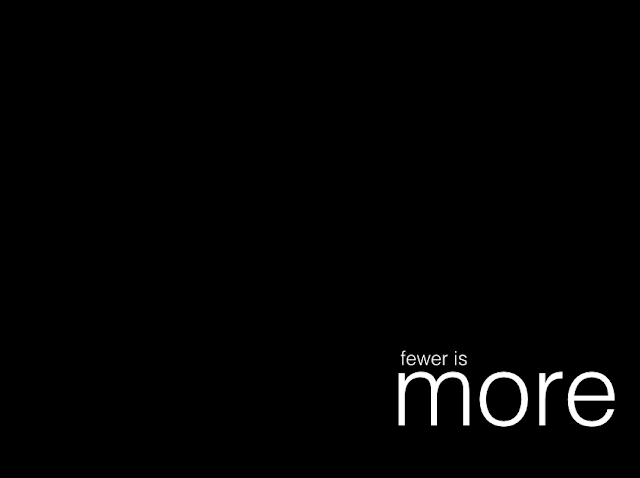Fewer slides in the online environment will lead to more engagement, less distraction and a more valued presentation. The supportive media in online presentations is a particular challenge due to multiple factors, many of which are outwith the control of the presenter; the number of slides is an obvious area for improvement. The nature of these slides must be maximised as discussed elsewhere and their purpose must be clear. Online presentations cannot simply be a standard presentation, uploaded.

The online environment magnifies the bad habits and techniques of the real-world presentation. Sadly, many colleagues believe that all that is required in a presentation is to open powerpoint deck and read it out, occasionally extemporising. This is much worse in the online environment for many reasons but principally because the presentation software on the majority of platforms takes primacy reducing the speaker to a tiny, disengaged talking head often “embedded” in the slides. Once it becomes clear that what is happening is akin to an audio book many will simply disconnect mentally and even physically.
Slides are not and can never be the script, the handout or notes. This is educationally and psychologically invalid. We do not retain information in this manner merely falsely reassure ourselves even that reading the slides means that some understanding and retention has taken place. It has not. Slides must provide support to the spoken message, not be an alternative.
In constructing the supportive media, the presenter must question the specific purpose of every single slide and even slides themselves. Tradition, expectation and conformity are not justifications. The opportunity for the audience and presenter to utilise other supportive media at the same time reduces the unreasonable desire to simply put “information” on slides. This may require prior preparation of both presenter and audience but, for instance, complex data, references and flow diagrams can be more effectively shared and viewed in other tabs on the computer metachronously rather than filling the slide and attention of the whole audience.
Be aware that even the use of single, high quality perfectly composed images to illustrate a point in the online environment will very quickly become distracting themselves in a way they are not in real-life events. The proximity of the audience to the image on their laptop will cause them to move more quickly to interrogate the image and be further distracted than would happen on a large screen in an auditorium.
Consideration of all these factors will dramatically reduce the number of slides that might be used and many presenters are then questioning the need for any slides in the first place. Do not be constrained by the ways of the world but make your own choices. Fewer slides in the online environment will increase the engagement of the audience and the value of the presentation overall.